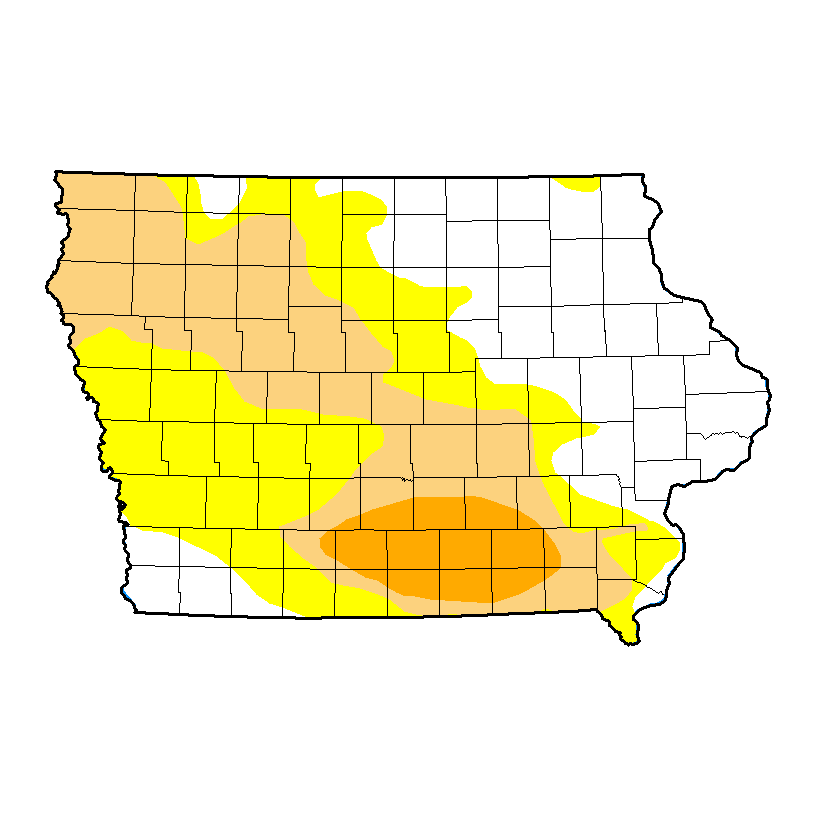
The latest Iowa Crop Progress and Condition report has been released by the USDA National Agricultural Statistical Service.
Iowa Secretary of Agriculture Bill Northey says last week’s cooler weather was welcome, but the lack of rainfall means drought conditions have remained in place for all of south central Iowa.
“The cooler temperatures we saw last week were welcome, but the lack of significant rainfall means drought conditions remain in place for many parts of Iowa, with severe drought in much of south central and south east Iowa,” Northey said.
In South Central Iowa, 67 percent of topsoil had very short moisture. Ten percent of the state’s corn corp is in poor condition or worse.
Report:
All of Iowa experienced cooler than normal temperatures and most of the State received below normal precipitation during the week ending August 6, 2017, according to the
USDA, National Agricultural Statistics Service. Statewide there were 5.9 days suitable for fieldwork. Activities for the week included applying fungicides and insecticides, hauling grain, and haying.
Topsoil moisture levels declined to 24 percent very short, 32 percent short, 44 percent adequate and 0 percent surplus. According to the August 1, 2017 U.S. Drought Monitor, Iowa’s region of severe drought expanded to include 16 counties in south central and southeast Iowa. Subsoil moisture levels rated 19 percent very short, 32 percent short, 48 percent adequate and 1 percent surplus.
Ninety-five percent of Iowa’s corn crop has reached the silking stage, 5 days ahead of the five-year average. Forty-two percent of the corn crop has reached the dough stage, 4 days behind last year. Corn condition declined to 2 percent very poor, 8 percent poor, 26 percent fair, 53 percent good and 11 percent excellent. Soybeans blooming reached 89 percent, 1 week behind last year and 3 days behind average. Two-thirds of soybeans were setting pods, 5 days behind last year but equal to average. Soybean condition rated 3 percent very poor, 9 percent poor, 29 percent fair, 50 percent good and 9 percent excellent. Eighty-eight percent of the oat crop for grain or seed has been harvested, 1 day ahead of average.
The second cutting of alfalfa hay was nearly complete. The third cutting of alfalfa hay was 38 percent complete, 3 days ahead of average. Hay condition dropped to 51 percent good to excellent. Pasture condition also dropped to 34 percent good to excellent. Cooler temperatures improved livestock conditions, but supplemental feeding has been required in some areas.

